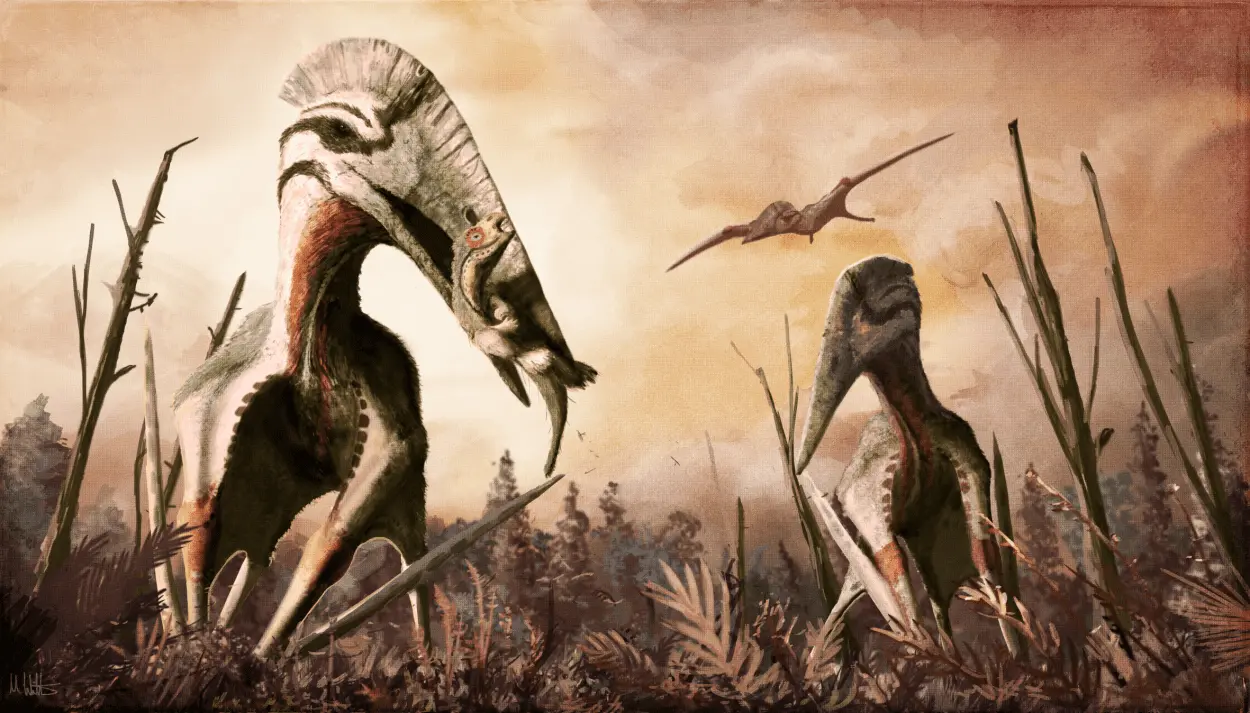
We know that dinosaurs roamed the Earth millions of years ago. Pterosaurs, the flying relatives of dinosaurs, lived alongside them 230 to 66 million years ago.
A new research by an. international team of palaeontologists has come up with evidence to show that these feathery friends of dinosaurs had the ability to control the colour of their feathers using melanin pigments. Led by palaeontologists from the University College Cork and from the Royal Belgian Institute of Natural Sciences and with a team of scientists from Brazil and Belgium, the results of this study have been published in the journal Nature in April.
115 MILLION-YEAR-OLD FOSSIL
This study is based on analyses of a new fossilised head crest of Tupandactylus imperator. This pterosaur fossil, which is 115 million years old, was from north-eastern Brazil. This species is famous for its bizarre huge head crest.
The team discovered that the bottom of the crest had a fuzzy rim of feathers. They believe that this specimen closes off the decades-long debate that palaeontologists have had about whether pterosaurs had feathers.
MELANOSOMES OF DIFFERENT SHAPES
Additionally, the team then studied the feathers with high-powered electron microscopes. They were able to find preserved melanosomes – granules of the pigment melanin. What’s more, they were able to show that the melanosomes in different feather types have different shapes.
Feather colour has a strong link to melanosome shape in birds today. The different melanosome shapes in the pterosaurs has led the researchers to argue that these animals must have possessed the genetic capability to control the colours of their feathers. It also shows that colouration was a crucial feature of even the earliest feathers.
This remarkable specimen has now been repatriated from Europe to Brazil, thanks largely to the efforts of the scientists and authorities, along with the contribution of a private donor. Returned to their country of origin, these fossils can now be conserved safely for posterity and be made available to scientists of future generations.
Picture Credit : Google




